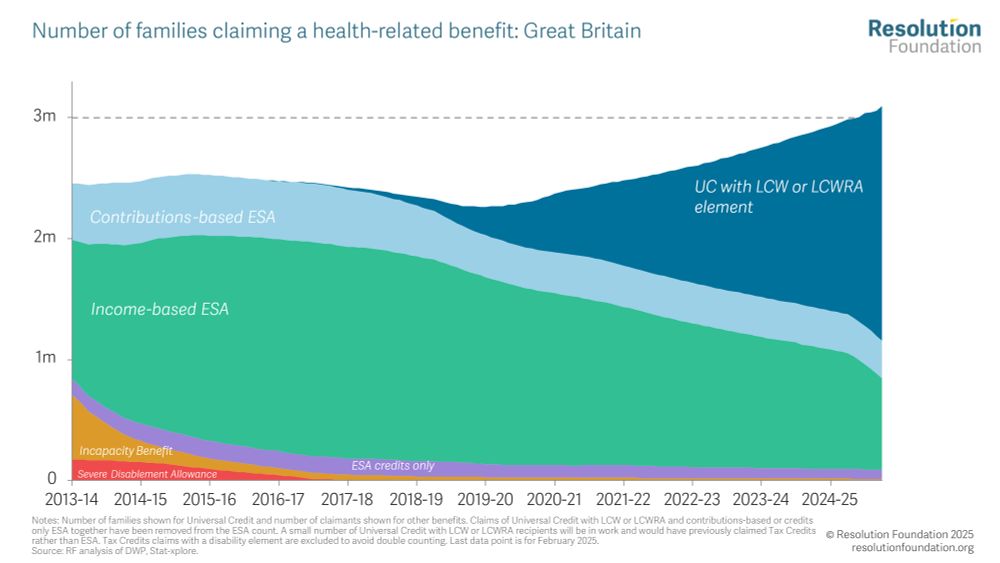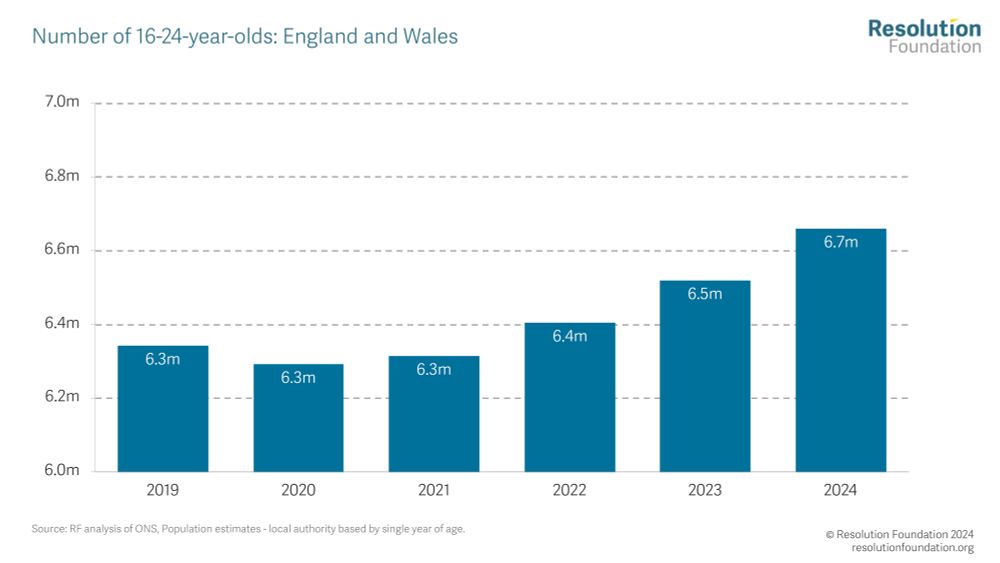
Welfare spending isn't 'out of control'. But it's true that some parts of the system are growing while others are shrinking. Since 2019-20, spending for pensioners and those in poor health has risen by £45bn in real terms, while everything else has been squeezed.

Welfare spending isn't 'out of control'. But it's true that some parts of the system are growing while others are shrinking. Since 2019-20, spending for pensioners and those in poor health has risen by £45bn in real terms, while everything else has been squeezed.

Average weekly pay has increased by just £3 in real terms over the past year – not even enough to cover the cost of a Tesco meal deal.

Average weekly pay has increased by just £3 in real terms over the past year – not even enough to cover the cost of a Tesco meal deal.
Since January 2025, nominal wages in wholesale, retail and hospitality have grown at four-times the rate (5.6 per cent) of wages in finance and business (1.3 per cent).

Since January 2025, nominal wages in wholesale, retail and hospitality have grown at four-times the rate (5.6 per cent) of wages in finance and business (1.3 per cent).
After we account for inflation, wages are still growing, albeit very slowly (at just 0.5 per cent over the past year).

After we account for inflation, wages are still growing, albeit very slowly (at just 0.5 per cent over the past year).
Short-term measures of pay growth suggest a rapid slowdown in recent months: the annualised three-month change in private sector pay fell to just 2.7 per cent in September.

Short-term measures of pay growth suggest a rapid slowdown in recent months: the annualised three-month change in private sector pay fell to just 2.7 per cent in September.
Worryingly, we’re almost at peak pandemic levels of unemployment – unemployment peaked at just 5.3 per cent in 2020.

Worryingly, we’re almost at peak pandemic levels of unemployment – unemployment peaked at just 5.3 per cent in 2020.


But we shouldn't expect journalists to do this every month. Until DWP publish their data more clearly, we shouldn't be surprised if misleading and unforgiving headlines keep coming.

But we shouldn't expect journalists to do this every month. Until DWP publish their data more clearly, we shouldn't be surprised if misleading and unforgiving headlines keep coming.



But while there are almost a million NEET young people, the support announced today (focusing just on 18-21-year-olds who are long-term unemployed and claiming UC) will reach less than 5% of this group...

But while there are almost a million NEET young people, the support announced today (focusing just on 18-21-year-olds who are long-term unemployed and claiming UC) will reach less than 5% of this group...





Over half of claimants in Inverclyde have a UC health award, compared to only a quarter in Newham. It’s noticeable that the top 10 LAs are in Scotland and Wales, and the bottom 10 are in and around London…

Over half of claimants in Inverclyde have a UC health award, compared to only a quarter in Newham. It’s noticeable that the top 10 LAs are in Scotland and Wales, and the bottom 10 are in and around London…
Almost half (46%) of claimants in Scotland have a UC health award, compared to less than a third (29%) in London.

Almost half (46%) of claimants in Scotland have a UC health award, compared to less than a third (29%) in London.
This matters - it means these young people are more disengaged from the labour market, and are likely to remain NEET for a longer time.

This matters - it means these young people are more disengaged from the labour market, and are likely to remain NEET for a longer time.

E.g. when we look at HMRC PAYE data, there has been a reduction in the number of under 25s who are in employment over the past year.

E.g. when we look at HMRC PAYE data, there has been a reduction in the number of under 25s who are in employment over the past year.

Why? The number of young people aged 16-24 has increased substantially over the past few years, reflecting changing birth patterns in the 2000s.

Why? The number of young people aged 16-24 has increased substantially over the past few years, reflecting changing birth patterns in the 2000s.

